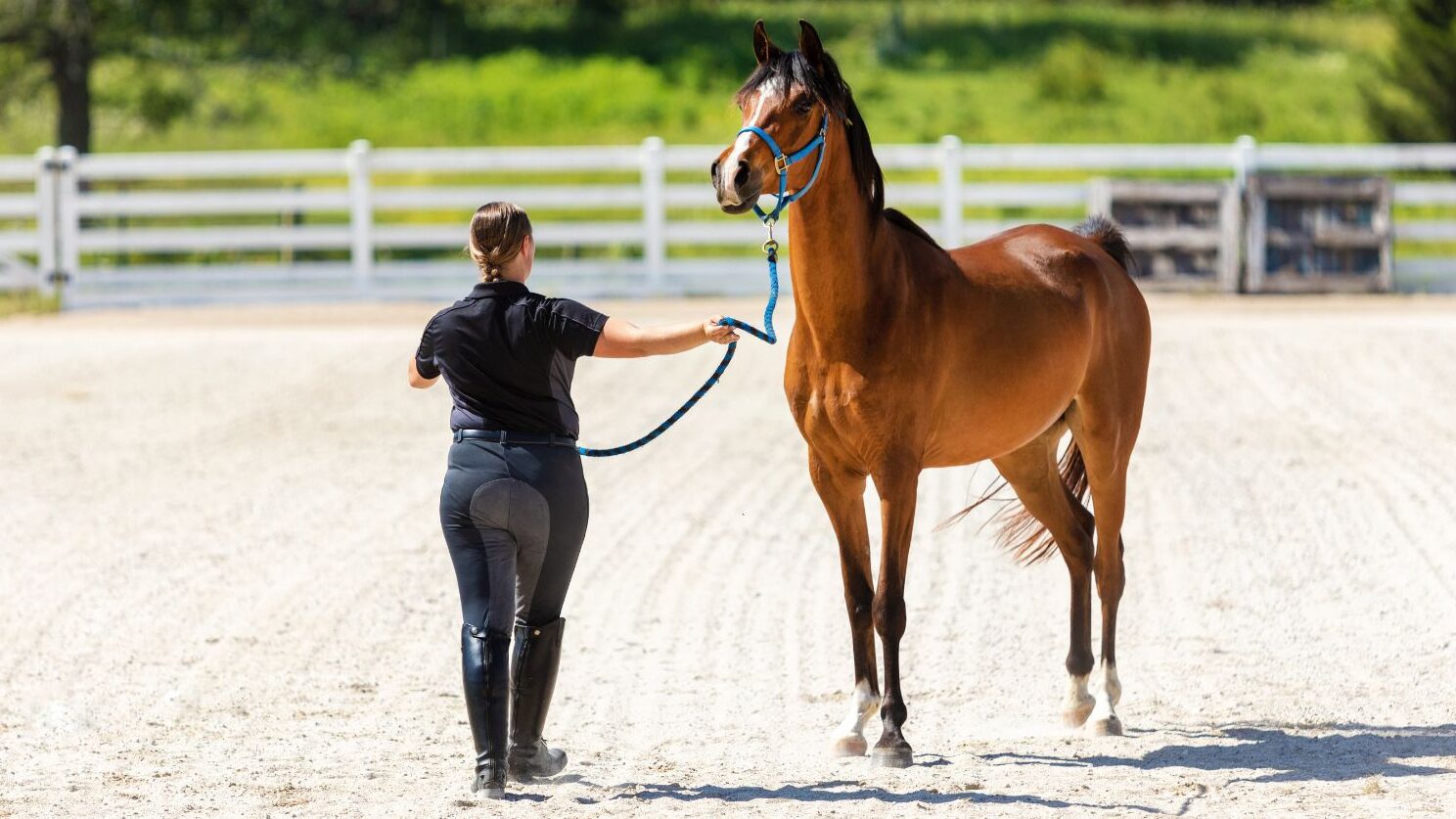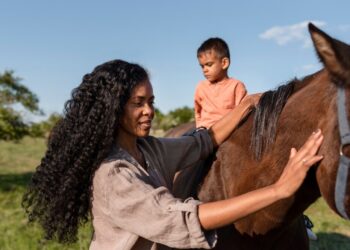Horse training can be very complex. So much so that many trainers don’t actually understand what they’re doing. It can also be simple, if you know what you’re looking for. In this article, we will discuss the number one goal of horse training: to have a well-mannered and obedient horse. We will also discuss some tips on how you can achieve this goal.

What Is The Number One Goal of Horse Training?
The number one goal of horse training is to have a well-mannered and obedient horse. The good news is that horses actually have the intelligence to learn basic training principles. In the past, horses were trained by humans to be well-mannered, obedient, and helpful to someone else. This can be done through positive reinforcement training. There are several ways to implement positive reinforcement training. The most widely used method is Clicker Training.
Clicker Training involves using a sound as a lure to get your horse to perform a specific action. When the horse performs an action, you will click with the lure to let him/her know that they are doing it right. You can also reinforce your horse with treats, praise, or a special command. Clicker Training is the most common method used in horse training today.
Develop Responsible Horse Behavior
Horses are created to be companion animals. They are not built to be work animals. This means that you should not try to make your horse a racehorse, showjumping competitor, or a dressage competitor. In fact, if you want a horse that is suitable for riding, trail riding, or just a normal daily walk in the park, then you should not breed your horse with the intention of selling it for a lot of money. Many horse owners yearn for their equine friend to be more responsible.
This includes having more self-control and being more responsive to training. Responsive horses are those that are not stubborn, but are instead responsive to their rider’s cues. Responsive horses are also those that listen when you say “no”. Responsive horses are also those that are not aggressive to other horses, people, or objects. Responsible horses are also those that are not aggressive to others and only have aggressive tendencies towards people when provoked. Responsible horses are those that are not afraid of heights, and those that are not afraid of things such as thunderstorms.
Responsible horses are those that are not afraid of strange noises and are not afraid of certain things such as spiders. Responsible horses are those that are not afraid of certain situations such as entering a pool and those that are not afraid of heights, things such as thunderstorms, and strange noises. Responsible horses are those that are not afraid of certain objects such as spiders, and those that are not afraid of certain situations such as heights, thunderstorms, and entering a pool. Responsible horses are those that are not afraid of certain people such as strangers and those that are not afraid of certain horses such as their horse.
Train For Specific Tasks
Horses that have been trained to perform specific tasks are exceptionally helpful. This includes horses that are trained to pull carts, plows, or other work-related equipment. In addition, there are horses that are trained to help disabled people. The reason these horses are so helpful is because they are trained to be very responsive to whatever is going on around them. This includes approaching and reactively approaching whatever task the disabled person is performing.
If you want your horse to perform tasks, you should aim to breed the equine with a disposition that enables him/her to be trained to perform various tasks. Breeding a horse with a strong and dominant disposition will make it difficult to breed a horse that is willing to be trained. You can also breed a horse with a dominant disposition, but you should make sure to mate it with a mare that has a submissive disposition. This submissiveness helps to make your horse more submissive and tractable.
Maintain Safe Horse Handling and Eradicate Fear
Horses that are afraid of certain things or situations should be retrained. It is important that you approach fear in a systematic manner so as to not have a situation where your horse is afraid of something and is too afraid to go near it. There are several ways to approach fear in a systematic manner. The most widely used method is desensitization and exposure therapy.
In this therapy, the horse is exposed to the thing that is scaring it. There are also other less widely used methods that are just as effective at helping horses to overcome fear. Some of these methods include using virtual reality therapy, exposure to sounds, and using a muzzle to help horses to overcome their fear.
Communicate With Your Horse and Rider
Horses are social animals. They live in groups and depend on each other to survive. In order to survive, they need to form strong bonds with one another. This is why horses are social animals, and one of the reasons why horses are so popular as pets. To successfully communicate with your horse and rider, you should aim to understand their intentions.
This includes observing what your horse does, what your horse does when he/she is content, and what your horse does when he/she is distressed. You should also aim to understand what your horse wants. This includes letting your horse know what he/she should be doing when you are leading him/her around, when you are giving him/her commands, and when you are simply walking him/her. You should also aim to let your horse know what he/she should be doing when he/she is eating, drinking, or resting.
Summing up
Horses can be very intelligent animals. They are also capable of learning very complex tasks if they are properly retrained. This means that the only way to have a well-mannered and obedient horse is to train it. To have a well-mannered and obedient horse, you should aim to have a well-mannered and obedient horse. The number one goal of horse training is to have a well-mannered and obedient horse. The number one goal of horse training is to have a well-mannered and obedient horse.
Horses can be very intelligent animals. They are also capable of learning very complex tasks if they are properly retrained. This means that the only way to have a well-mannered and obedient horse is to train it. Horses are social animals. They live in groups and depend on each other to survive. The only way to have a well-mannered and obedient horse is to train it.




















